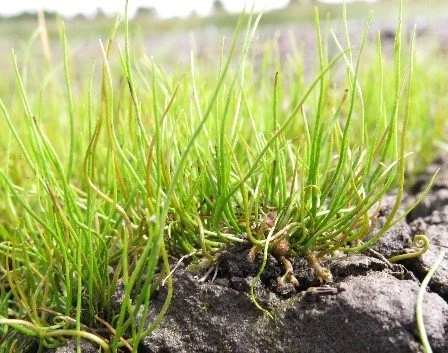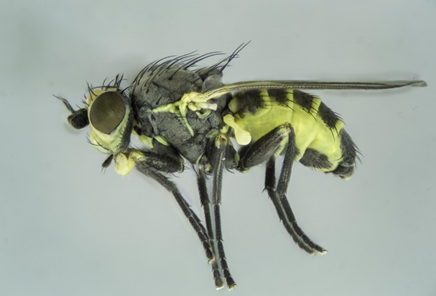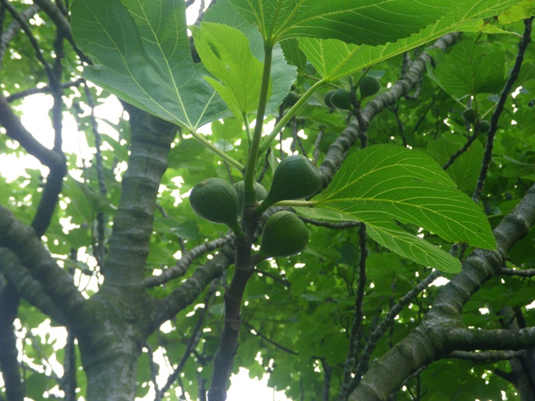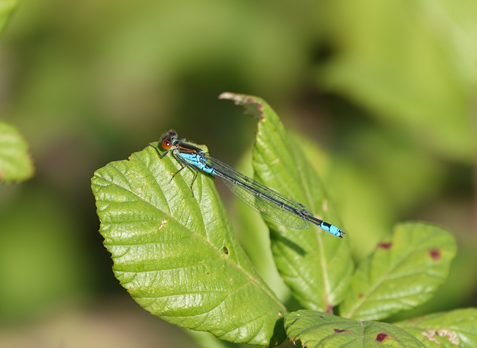#39 Common Cottongrass by Wendy English
Wendy’s chosen species is an iconic plant of moorland, heath, and wetland: Common Cottongrass Eriophorum angustifolium.
Wendy is an enthusiastic amateur botanist, interested in habitats and their conservation. She is the botany recorder for Whitby Naturalists’ Club and has been a conservation volunteer for Fylingdales Moor in the North York Moors National Park (NYMNP) since the scheme began in 2007.
Read More
#38 Bottlenose Dolphin by Stuart Baines
Stuart’s chosen species is the Bottlenose Dolphin Tursiops truncatus.
Stuart Baines was born and bred in Scarborough. He has always had an interest in Yorkshire’s coastal wildlife and has over the last thirteen years developed a strong passion for the study and conservation of marine mammals that visit and live in the seas of his hometown. Stuart is a regional coordinator representing the national cetacean charity Sea Watch.
Read More
#37 Microbotryum parlatorei by Sam Buckton
Sam’s chosen species is the elusive dock smut fungus Microbotryum parlatorei.
Sam Buckton is currently Plant Gall Recorder for the Yorkshire Naturalists’ Union and Vice-Chair of the British Plant Gall Society. He is currently a Research Assistant with the University of York’s FixOurFood programme, a project investigating how Yorkshire could transform towards a regenerative food system, and started a PhD with the programme in autumn 2022.
Read More
#36 Roesel's Bush-cricket by Phillip Whelpdale
Phillip’s chosen species is the Roesel’s Bush-cricket Metrioptera roeselii.
Phillip currently works for the Royal Society of Wildlife Trusts as Geographic Information Systems Manager, but has previously worked for the Yorkshire Wildlife Trust. He is also the Yorkshire recorder for Orthoptera, the group which includes crickets.
Read More
#35 Pillwort by Anne Carter
Anne’s chosen species is the UK’s only native aquatic fern, Pillwort Pilularia globulifera.
Anne is the Northern Project Officer for the of Freshwater Habitats Trust and has an interest in all things pond-y. She iskeen on championing the rare pond critters that folk usually forget about, include Pond Mud Snail and Medicinal Leech.
Read More
#34 Napomyza crepidicaulis by Barry Warrington
Barry’s chosen species is self-discovered, found new to science in 2020 - Napomyza crepidicaulis.
Barry is the organiser of the National Agromyzidae Recording Scheme. Before he launched the recording scheme, Agromyzidae (leaf mining flies) was a rather niche family, but thanks to his passion and promotion of the family, along with always being happy to help others with ID queries and the like, interest has grown massively.
Read More
#33 Pink Waxcap by Steve Hindle
Steve’s chosen species is a real jewel of our vulnerable grasslands, the Pink Waxcap Porpolomopsis calyptriformis.
Steve works as the Ancient Grasslands Project Officer for the National Trust, focusing on grasslands of conservation concern which might otherwise be overlooked as botanically mundane. He is interested in CHEGD fungi, a group restricted to undisturbed ancient grasslands. The most well-known of these fungi are the Waxcaps, often striking and colourful species.
Read More
#32 Common Lizard by Tanya Eyre
Tanya’s chosen species is the most commonly seen reptile in Yorkshire, the Common Lizard Zootoca vivipara.
Tanya is Education Officer on Fylingdales Moor in the North York Moors, a conservation moor encouraging biodiversity. Having worked there for 12 years, Tanya is paid through a Stewardship Scheme to share this wonderful wild landscape with groups ranging from schools to Guides and the Women’s Institute.
Read More
#31 Dark Bordered Beauty by Peter Mayhew
Peter’s chosen species is the beautiful Dark Bordered Beauty moth Epione vespertaria.
Peter is a Senior Lecturer in Ecology at the University of York where he has worked since 1998. His research interests include the ecology and evolution of insects; about which he has been involved in a broad spectrum of projects. He has has been part of the team monitoring the Dark Bordered Beauty moth in Yorkshire since 2013.
Read More
#30 Moonwort by Barry Wright
Barry’s chosen species is Moonwort, Botrychium lunaria.
A primitive fern species, it looks nothing like what most people would call a fern. It is small (<10cm), but occasionally 15cm. It is also unlike many ferns people will be familiar with in that it grows in the open in grasslands, usually unimproved short turf swards.
Read More
#29 Fig by Ziggy Senkans
Ziggy’s chosen species is the Fig Ficus carica. Native to hotter climes, how did this species end up here?
As well as his role at Sheffield City Council, Ziggy also works within the Sheffield & Barnsley Biological Records Centre. He is interested in all aspects of natural history, especially fungi and what are termed ‘invasive species’. He is the recorder for the Sorby Fungus Group.
Read More
#28 Water Vole by Jon Traill
Jon’s chosen species is the enigmatic and often elusive Water Vole Arvicola amphibius.
Jon has worked for Yorkshire Wildlife Trust for over 20 years. His first role was as a dedicated ‘Water Vole Officer’, and it was then that he first came across this enigmatic little mammal. Now Jon is Yorkshire Wildlife Trust’s Living Landscape Manager for the Wolds and Holderness areas of East Yorkshire, and whilst this sometimes takes him away from wetlands, water vole conservation is still an underlying thread in his life and career.
Read More
#27 Grayling by Paul Leonard
Paul’s chosen species is the rare butterfly, the Grayling Hipparchia semele.
Paul has worked for the Countryside Service (and its various derivatives) of Rotherham Metropolitan Borough Council since 1986, and he is currently 12 years into his role as manager of the Rotherham Biological Records Centre.
Read More
#26 Royal Fern by Alastair Fitter
Alastair’s chosen species is the rare and impressive Royal Fern Osmunda regalis.
Alastair Fitter is Emeritus Professor of Ecology at the University of York and is a plant ecologist with interests in soil ecology, especially plant roots and mycorrhizas, and in plant and microbial behaviour in response to climate change.
Read More
#25 Greenfinch by Sarah Dann & Bethany Clarkson
Sarah and Bethany’s chosen species is the much-loved garden favourite, the Greenfinch Chloris chloris.
Sarah and Bethany both started training as rangers in June 2021 at St Nicholas Fields, a local nature reserve charity in York. St Nicks also supports other organisations to deliver practical conservation work across ‘corridors’ through the city. Both Sarah and Bethany finished their traineeship in October, and since then have been lucky to continue working at St Nicks.
Read More
#24 Taphrina carpini by John Newbould
John’s chosen species is the unassuming but intriguing plant gall, Taphrina carpini.
John has been involved with wildlife surveying for over 45 years. He was President of the Yorkshire Naturalist’s Union in 2013, previously Secretary and Treasurer for too many years. Currently he lives in Dorset, where he is a Volunteer Specialist for the National Trust (Nature Evidence Team) based with the West Dorset Team.
Read More
#23 Alcathoe Bat by John Altringham
John’s chosen species is the cryptic Alcathoe Bat Myotis alcathoe, a species quite new to us here in Yorkshire!
John is Emeritus Professor of Animal Ecology and Conservation at the University of Leeds and an advisor to a wide range of conservation organisations. He is interested in all aspects of nature, but his primary research interest is bats.
Read More
#22 Small Red-eyed Damselfly by Keith Gittens
Keith’s chosen species is the delicate and beautiful Small Red-eyed Damselfly Erythromma viridulum.
Keith is semi-retired from professional horticulture and has had a lifetime interest in nature and conservation. He is the British Dragonfly Society County Dragonfly Recorder for North West (Vice County 65) and North East Yorkshire (Vice County 62) and is involved in the verification of records and the promotion and conservation of dragonflies.
Read More
#21 White Willow by Ian Rotherham
Ian’s chosen species is an icon of Yorkshire’s fens, the White Willow Salix alba.
Ian Rotherham is Emeritus Professor at the Advanced Wellbeing Research Centre, Sheffield Hallam University. Former Principal City Ecologist for Sheffield City Council, he is a landscape historian, ecologist, and specialist in wildlife tourism development. He works on projects with local groups and with regional and national conservation organizations.
Read More
#20 Yellow Rattle by Kelly Harmar
Kelly’s chosen species is an icon of species-rich meadows, Yellow Rattle Rhinanthus minor.
Kelly helps manage nature conservation projects and also looks after the species, habitat and environmental data collected by the Nidderdale AONB and its volunteers each year. Kelly runs a meadow restoration project each summer, helping to restore and enhance wildflower rich hay meadow habitat.
Read More




















